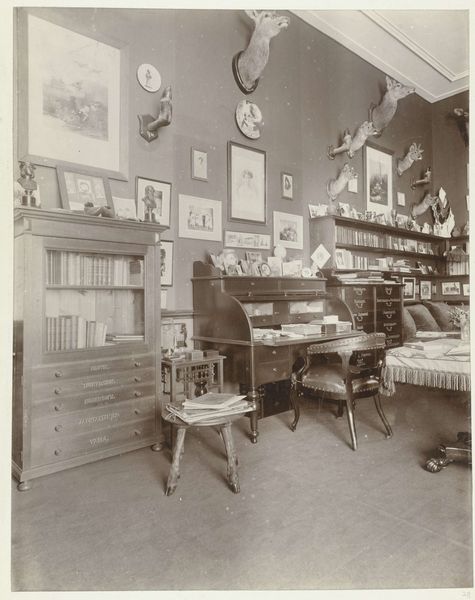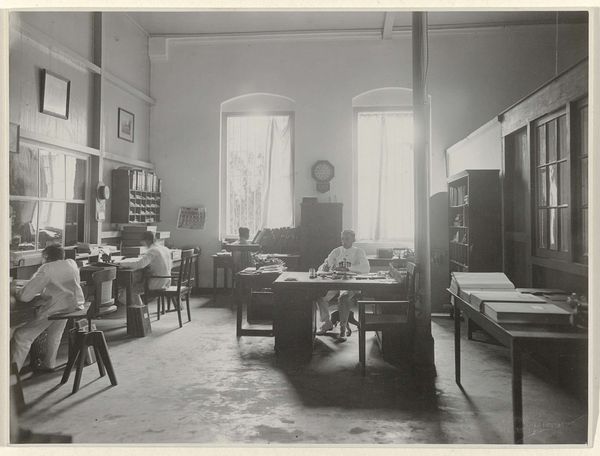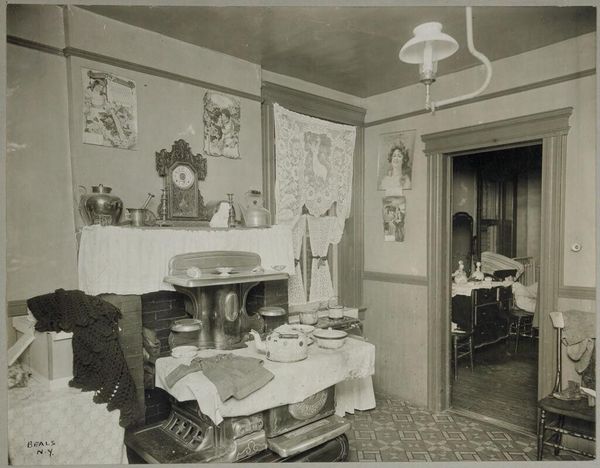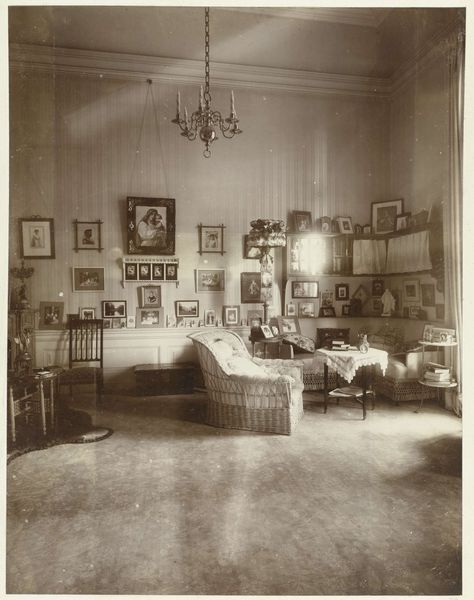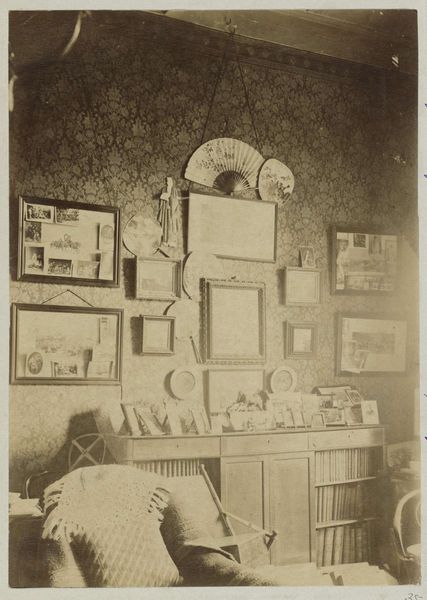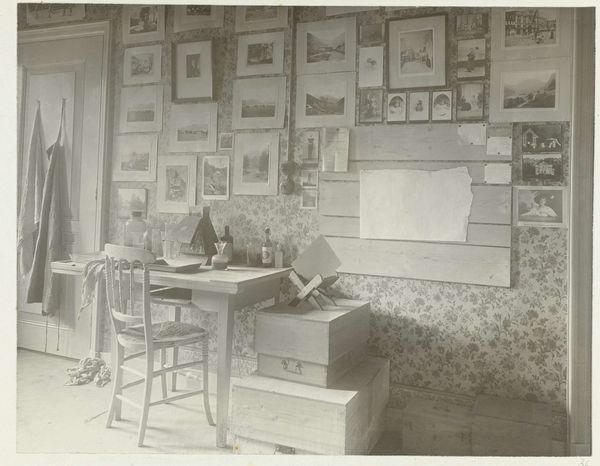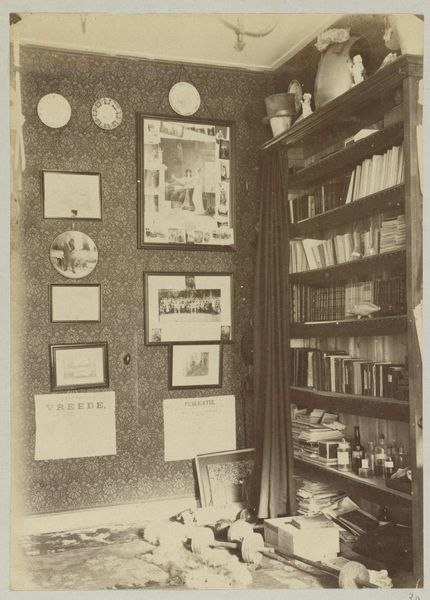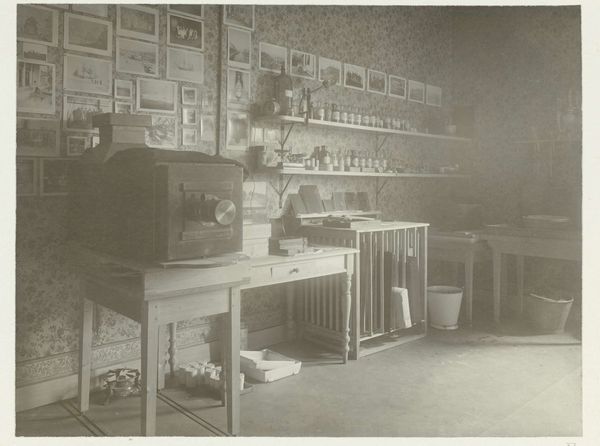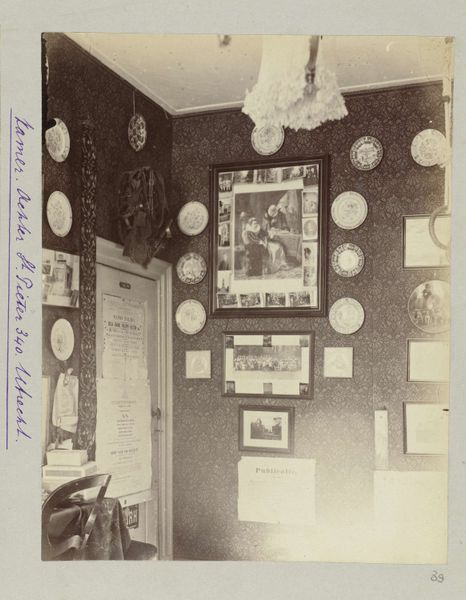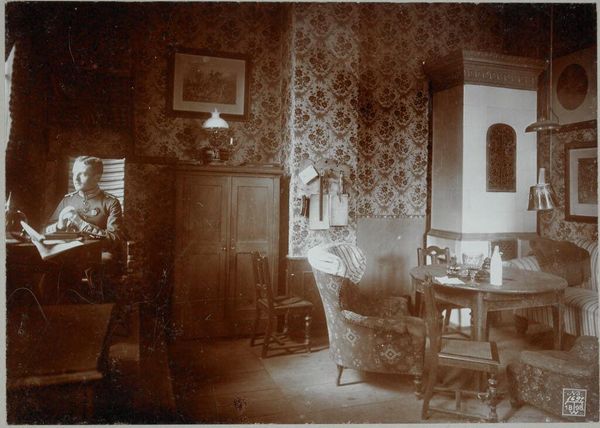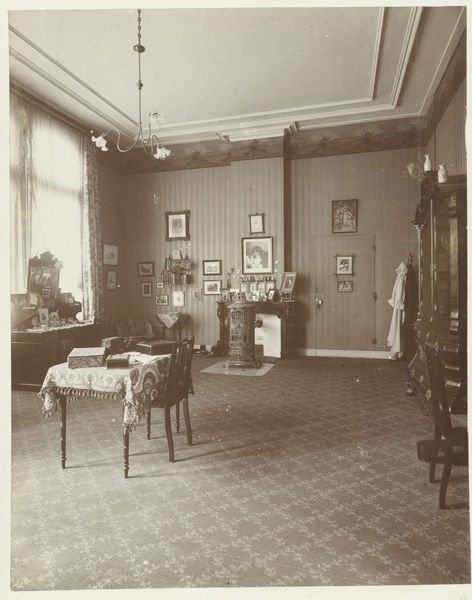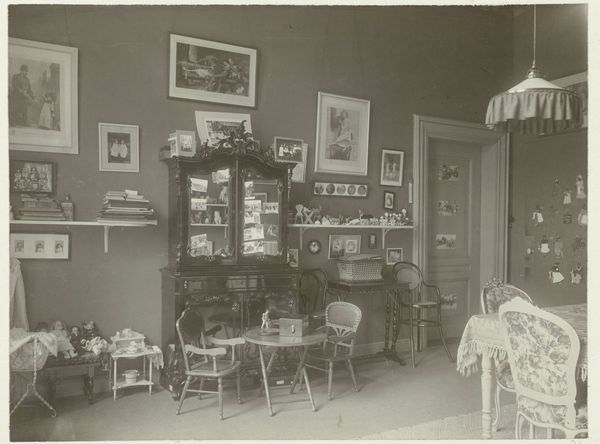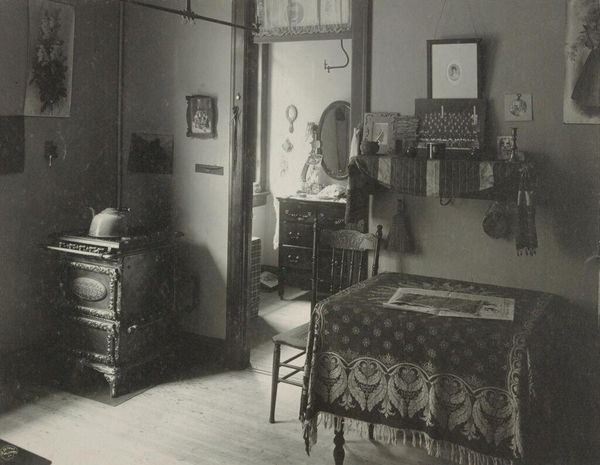
photography
#
portrait
#
photography
Dimensions: height 335 mm, width 520 mm, height 166 mm, width 223 mm
Copyright: Rijks Museum: Open Domain
Curator: This photograph, entitled "Kamer in landhuis De Wildbaan, Driebergen," was captured by Henry Pauw van Wieldrecht sometime between 1903 and 1907. It gives us a glimpse inside a room in the country house, De Wildbaan. What are your initial thoughts? Editor: Well, first off, it strikes me as incredibly cluttered. Not in a chaotic way, but meticulously curated to display wealth and… masculine interests. A lot of dead animals staring down at us! Curator: The taxidermied animals certainly suggest the lifestyle of a landed gentry focused on hunting. But look beyond the trophies. The placement of the portraits, the books, the desk—all tell a story about identity and power within a specific social milieu. Whose gaze do we imagine controlling this room, this narrative? Editor: Right, this space reflects deeply entrenched social structures. It screams privilege, doesn't it? The formality, even in what looks like a study or office… the weight of tradition and hierarchy seems almost palpable. Notice the technology too—the presence of the telephone and maybe a very early dictaphone suggests forward-looking innovation, but embedded within the very traditional aesthetic framework. Curator: Indeed. And it’s critical to examine how this image may have contributed to shaping public perception of this wealthy class. Van Wieldrecht likely meant to present this as refined and tasteful. Do we agree with this value judgement? The role of photography in idealizing such living conditions cannot be understated. Editor: I find it difficult to divorce the aesthetics from the underlying implications of this comfortable domesticity built on existing systems of inequality. Those stags on the wall didn't shoot themselves. They signify very material dominance. Curator: I think the act of viewing demands we reckon with these complex relationships: those presented by the photographer and our current analysis of the photograph. It reveals that even seemingly straightforward snapshots can unlock richer dialogue on power, social status and gender performance. Editor: Absolutely. Images like this aren't just pretty pictures; they are deeply embedded with loaded signifiers. Thanks for unraveling a few of them here with me.
Comments
No comments
Be the first to comment and join the conversation on the ultimate creative platform.
